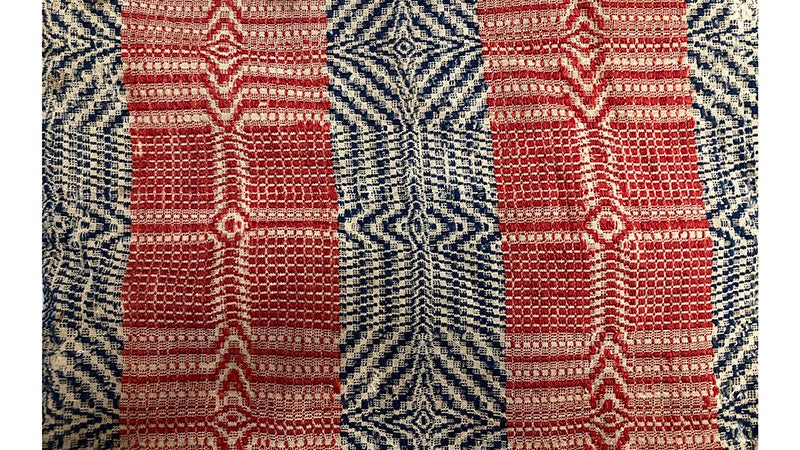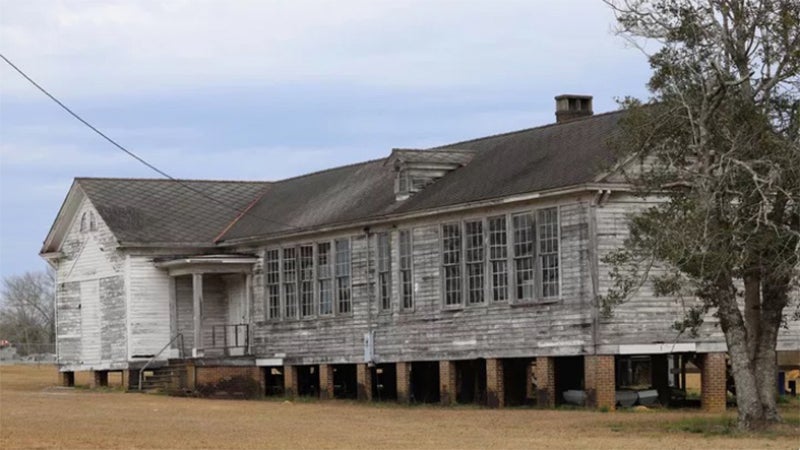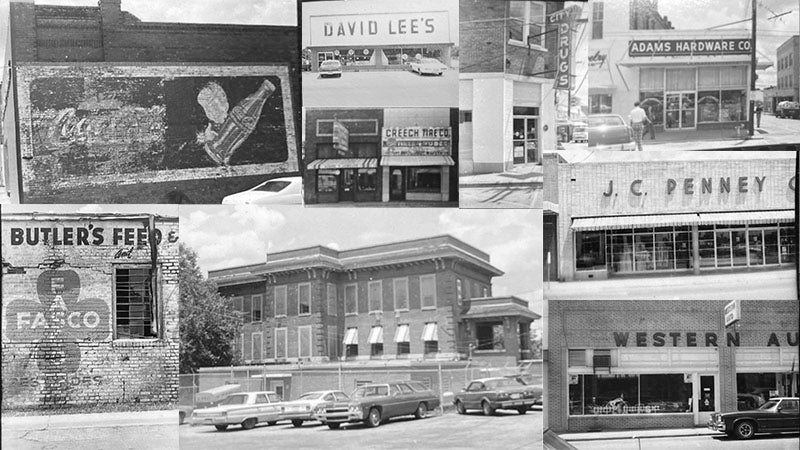Remember When: Folks used ‘little brown shack’
Published 3:06 am Saturday, September 29, 2018

- This old postcard shows the Farmers Union Warehouse in Andalusia.
Remembering back to 1965, the “hootenanny” days of the folk singing craze, the “Singing Sisters” of the AHS Glee Club sang a song reminiscent of pioneer days and Depression days. “The Little Brown Shack Out Back” lyrics went something like this – “They passed an ordinance in the town, they said we’d have to tear it down – that little brown shack out back so dear to me…I would hum a happy tune peeping through the quarter moon as my pappy’s kin had done before. It was in that quiet spot daily cares could be forgot. It gave the same relief to rich and poor. Don’t let ‘em tear that little brown building down for there’s not another like it in the country or the town!”
A story by Alma Lou Hall of Deer Range in Conecuh County near Luverne in her book “Rabbit Stew” is so exemplary of those days on the farm. Thinking of Alabama’s upcoming Bicentennial celebration in 2019 and the need to preserve Alabama history, let me share some of the remembrances of Mrs. Hall’s life experiences.
“When people first came to Alabama, they had to camp in a make shift brush or quilted tent unless they were lucky enough to stay with neighbors, friends, or family who had come before them. The cabins and houses were usually a size according to the money the families brought with them. “
“There were no out-houses for the most part. All members of the family had to go to the bushes or use a ‘pee bucket.’ It was hot in the summer with bugs and spiders to deal with and very cold in the winter. Everyone had to use a throw away rag, leaves, or corn cobs for toilet tissue. And Lord help them if they got hold of a poison bush or leaf. The corn cob was like cleaning with a piece of today’s sandpaper. So the choice was between a rock and a hard place for sanitation purposes.”
“The out-house was built behind the cabin or house. The womenfolk always used the out-house. Many times the men folk went to the woods to relieve themselves.”
“You had better watch out for spiders and wasps. At night black bats, they liked to hang upside down in the top of the out-house. As one would go in to use the facility, the bat let loose and flew everywhere. You better cover some ground fast for if a bat bit you, he might give you rabies or if you breathed spores from the bat drippings, you could get flu like symptoms called histoplasmosis unheard of in our day and time. The fungus affects the lungs (in this ailment).”
“There also was the dreaded ‘Billy Bob,’ the male goat. You had to beware of his whereabouts, because he would steal up from behind you sending you further than you wanted to go!”
“I was painting Mama’s rocking chair a pretty apple green. ‘Billy Bob’ unexpectedly rear ended me with his head. I flew into the wet paint and ended up looking as green as Eve did in the ‘Garden of Eden’ after she had eaten forbidden fruit.”
“When adults went to the out-house at night, a lantern or candle was carried until the flashlight, another rare invention, became available. Pages from the Sears Roebuck catalogs were as valuable for our toilet paper as it was for ordering. We ordered many of our clothes, hats, shoes, hammers, saws, materials for making dresses and sheets. The person that patented our present toilet tissue did a good thing for so many people, sanitation, and our environment.”
“One time Grandpa was setting on the seat of the out-house when it began to move. Grandpa began yelling real loud. The out-house fell over upon its side, and he was left sitting on the out-house seat with his pants down. A tornado had just passed!”
“In the very cold weather, the nights were so dark and cold. Slop jars, chamber pots, and syrup cans (under the bed) were used by the whole family. Early in the mornings, one could see the mother, the grandmother, or an old aunt with a shovel in hand going above the garden spot to bury the body waste.”
”The adults never complained of all the drudgery, but the sisters had thought of better days ahead, and their faith spurred them on with their menial tasks. Yes, the days got better, but the memories still linger.”
“The other day, I was contemplating on who invented the commode, wondering how they invented the flushing with piped in water from the wells and pumps. Stop and think about the lowly commode. It is some invention!”
“The out-houses were sometimes called ‘privies.’ There was usually two to three places cut out for the seats. These were diamond or round shaped and sized to meet the individual need of the family. Lime was dusted over the body waste as a disinfectant. The old out-house was wishing from the Sears Roebuck catalog – sitting there waiting for nature to act dreaming and listening to all the noises of outside nature around the farm.”
“There were hens clucking to their chicks while others were laying and cackling, birds singing, dogs barking, roosters crowing, cows lowing, cowbells ringing, and Mama calling the children home for supper.”
“We will always tell each generation about the out-houses – the wishing, the dreaming, the many laughs and scares when the Sears Roebuck catalog was late coming. A box of corn cobs lay in the corner of the out-house. What a rough ending! Tell your off-springs about the out-house!”
That is such a precious story. It will bring tears to some of your readers’ eyes! There are lots of tales that surround the out-houses and the chamber pots. One old expression comes to mind – “Is that you speaking or the slop bucket leakin’?” My daddy heard that unforgettable saying from his maternal and paternal grandparents up in Tennessee.
A chamber pot is under the feather bed in the old log cabin at the Three Notch Museum. When school children tour the museum and the out buildings, they often hear the story of the chamber pot under the bed. The out-houses were not just located on the farms but were in the back yards of many residential houses even right here in Andalusia when the outdoor privies were usually situated beside the back yard hen houses. I know of one right there on Third Avenue that had those “luxuries.”
Many of the iron toilet seats were manufactured in downtown Andalusia at the Andalusia Foundry and Machine Shop which was located to the east of the courthouse and old jail as shown in the old postcard photo. One of those seats is on display at the museum. It is embossed in the company name.
Yes, it is always interesting and sometimes amusing to REMEMBER WHEN.
Sue Bass Wilson, AHS Class of 1965, is a real estate broker and longtime member of the Covington Historical Society. She can be reached at suebwilson47@gmail.com.






